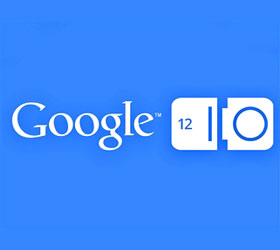According to you, has the fall of traditional personal computing devices begun? Although many claim tablets have surpassed PC sales, it is yet to see itself established as a preferred tool of choice for work. Where do you see the gap?
The personal computer is no longer defined by a form factor. Andy Grove once said the PC is the ultimate Darwinian device. And what’s happening right now is that computing is evolving. The industry is in a period of transition and hyper-innovation. New shapes like tablets, 2-in-1s and new operating systems are blurring the traditional lines. We now have a much greater choice of devices—we typically own more devices—and choose the right one for the task at hand. When you look across the spectrum of device form factors (i.e., desktop, notebook, Ultrabook and tablet and smartphone) and operating systems, personal computing is evolving and growing.
Gartner’s prediction is still that more than 1 billion PCs will be sold in the next three years.
In developing 4th Generation Intel® Core processors, we changed the roadmap of our flagship processor to deliver what people want – more ultra-mobile devices. In a short timeframe, we’ve brought down the power of Intel Core family from 35 watts down to 6 watts in our low power line of chips. Earlier this year we disclosed that we will bring versions of the “Bay Trail” 22nm SoC with PC feature sets specifically designed for value 2-in-1s, clamshell laptops, desktops and all-in-one computers later this year. Ultimately offering users a spectrum of computing products at a variety of affordable price points.
Intel is well positioned to take advantage of these trends across the spectrum of computing, from the lowest power portable devices to the most powerful data center servers and everywhere in between. In roughly a year and a half, Intel has worked with customers around the world to launch a number of smartphones (13) across more than 30 countries in SE Asia, China, India, Europe and Latin America. We expect to continue to grow our geographic footprint for smartphones this year and into next, and we’ll make continued progress in expanding our customer profile.
Fundamentally, what qualities and support from the industry does Tizen have that Moblin/MeeGo didn’t? What were the lessons learned from the limited success of the earlier attempts of a platform for mobile and computing devices?
The overall value proposition of Tizen consists of four key pillars: utilization of HTML 5 standards for app development, a truly open software ecosystem, innovation and differentiation offered to ecosystem partners and the solid backing of key industry leaders.
- HTML 5 Leadership – Speeds app delivery across multiple OS platforms and devices. Developers can easily and rapidly create and deliver a variety of innovative applications while also taking advantage of Intel platform capabilities.
- Open Source – Equal opportunity for Service Providers, OEMs and other ecosystem members to contribute, influence and benefit. Participants can shape the evolution of software platform early in the release development process through code contributions with no restrictions on applications or services under an open governance model.
- Innovation and Differentiation – a robust core OS platform frees OEMs and service providers to focus on innovative, differentiated solutions and value-add services. Enables business freedom: your own brand strategy with apps, services and a fully customizable UX. Tizen will also offer compelling, global developer programs to incent app creativity, further enhancing the user experience.
- Industry support — consolidation of the LiMo and MeeGo efforts will amplify and broaden the level of ecosystem support, in particular by service providers who are essential to pave the way for successful device introductions and product acceptance by consumers.
The key differences are Tizen’s comprehensive, standards-based HTML5 application solution and even broader industry support.
Members of the Tizen Association represent every major sector of the mobility industry and every region of the world. Current members include OEMs Samsung, Fujitsu, Huawei, Panasonic Mobile Communications and NEC CASIO Mobile Communications; operators KT, NTT DOCOMO, Orange, SK Telecom, Sprint and Vodafone; and Intel. For more information, please refer to their Web site.
When you compare India to the rest of the developed markets, what gaps do you see from a developer ecosystem point of view? What steps are being undertaken by your team to fill some of these gaps?
Indian developers are very talented and are fast learners. Indian developers has produced great software solutions for Enterprises of the world over the last few decades and will continue to do so, However Indian developers need to apply this strong background to evolve equally great consumer applications . The Indian developer need to focus on App User Experience for a wider audience , Innovation for local markets and think about news ways of monetizing applications. Indian developers tend to focus on quantity than the quality of the business model of the applications.
Intel is trying to help the Indian developers by providing them training on the User Experience and how to improve on them. Intel also offers mentoring support during app ideation and also rolled out multiple contest to highlight new usage models and innovation.
Intel has provided easy software tools which allow the faster time to development on stacks such as Android and HTML5 ensuring that the developers think more deep for the business value of the application and monetize it.



